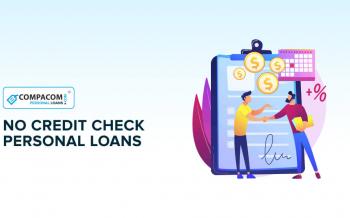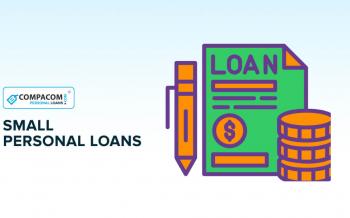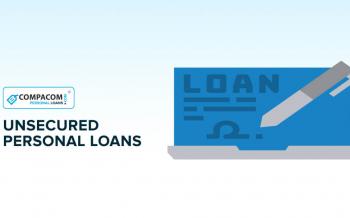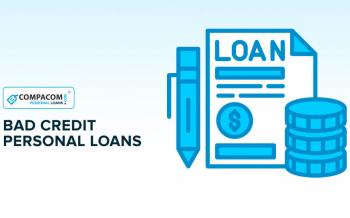If you are facing a financial problem while studying at a University or College, don't worry you will be helped by personal student loans such as Federal student loans, they can be used for the purpose to pay for College expenses, but they come from a Bank, credit Union or online lender, not from the Federal government.
Ad
Table of Contents:
What are Personal student loans
How to apply for Personal student loans
How to use Personal loans to pay off student loans
Personal loans to consolidate student loans
Personal student loans for bad credit borrowers
Personal loans vs student loans
What are Personal student loans?
Currently, standard educational credit is usually directly tied to the school, which means that administrators there tend to set the loan amount, but personal student loans give the student more control. The Student himself determines how much money he will need and the funds go directly from the Bank to the student, without the intervention of the school. Personal student loans provide them with the funds they need to cover their expenses while studying, and this can help them stay in the institution. For these students, the benefits outweigh the risks.
How to apply for Personal student loans?
You can apply either online or through a financial institution. When it comes to finding the right private student loan lender, you should look through several candidates and choose exactly the one that suits you. To apply online you will need to register on the site, apply and get approved. Here's what a blender might need for Personal student loans:
- Driving license
- Social security card
- Passport
- State identifier
- Military ID
- Certificate of citizenship
- Identity card with photo issued by the government.
Federal student loans
Federal student loans, otherwise known as government loans, fellow students and parents / guardians, borrow money for their institution directly from the Federal government. It depends who you are a bachelor's student, graduate or professional students or parents, and the amount of money you can provide government. The application process begins with you having to first fill out and submit a free application for Federal student aid (FAFSA). And after that, your school will send you a financial aid offer that may include Federal student loans. Without the FAFSA, you won't receive any federal loans, scholarships or grants.
Private student loans
The main difference between Federal and private student loans is that the Federal government provides Federal student loans, but a private lender provides private student loans. These two types of loan offer very different benefits, interest rates and payment options. The amount of credit you can borrow depends on factors including Federal or private loans and your year in school. Students can borrow up to $ 13,500 annually and $ 58,500 total in Federal student loans. Graduate students can borrow up to $ 21,500 annually and $ 139,500 total.
How to pay off student loans?
A few items will help you pay off student loans:
- Make more than minimal payments.
- Your payments are divided into 2 parts.
- Register for automatic payment.
- Refinance.
- Join a company that offers debt relief.
- Volunteer.
- Pay according to your personality.
- Know how much you owe and choose a repayment plan. Students have the opportunity to learn more about the repayment options for their Federal loans, including various income-oriented plans.
How to use Personal loans to pay off student loans?
A personal loan can be a way to quickly repay student loans or cover financial expenses in a new environment. The loan has a fixed term and a fixed payment for the duration of the loan. Personal loans generally do not have any prepayment penalties, and they affect your credit just as a student loan would.
Personal loans to consolidate student loans
If you want to consolidate your personal and private student loans, you must do so through a private lender. This will help you consolidate and refinance multiple education loans into one new loan with a new interest rate, maturity and monthly payment amount. This may result in a lower interest rate and / or monthly payment.
Personal student loans for bad credit borrowers
Do not worry if you do not have a good credit rating and you are interested in getting a student loan, then it depends on the type of student loan. You will not find bad credit student loans designed specifically for students with bad credit. However, you can qualify for Federal student loans that don't take into account your credit score or credit history at all. These loans are needs-based and do not require a credit check. There are several popular including direct loan, Grad PLUS loan and Parent PLUS loan.
Read more: Bad Credit Personal Loans.
Personal loans vs student loans
Usually, Personal loans can be used for any purpose, but it also happens that some lenders limit how you spend your loan funds. On the other hand, student loans have only one purpose: to be used for spending on secondary education. There are a number of benefits to both personal and student loans:
- Personal Loans
- You can use them for any purpose.
- A very simple way to apply.
- Available for bad credit
- Student Loans
Read more: Personal Loans.
Best personal student loans
Credible refinance student loans
We rate credible refinance student loans it as one of the very best student loans. Just like for a student loan refinance, you can fill out a simple form and compare offers from multiple private student loan lenders all at once (without a hard credit check)
Chase student loans
Chase student loans funded both Federal and private student loans. The financial institution offered private student loans directly to borrowers and worked with the government as a service provider for Federal student loans.
Capital one student loans
Capital One is a Bank that is located in the United States and provides many financial services. Now, Capital One student loans are not available, but the Bank can offer you personal loans that allow students to pay for their educational institution. With these roads, students can get the full cost of their education.








You are about to post a question on compacom.com:
Any comments or reviews made on this website are only individual opinions of the readers and followers of the website. The website and its authors team are not responsible, nor will be held liable, for anything anyone says or writes in the comments. Further, the author is not liable for its’ readers’ statements nor the laws which they may break in the USA or their state through their comments’ content, implication, and intent.